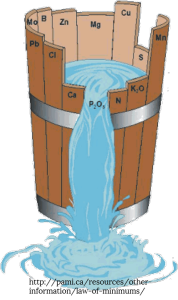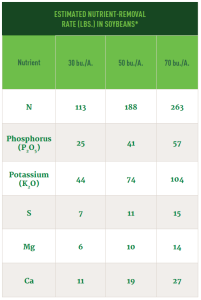Soil fertility is one of the most important components to soybean management, yet many growers only have a general idea of their soil nutrient needs. Since soybeans are thought of as rotational crop by many North Carolina growers, the importance of assessing and meeting the fertility needs of the crop is often overlooked.
Regular and thorough soil sampling is the best way to take the guesswork out of soil fertility and should be considered an integral part of every management plan. At a cost of just a few dollars per acre (or free if you get your samples in by today), soil sampling is a relatively cheap investment to help make decisions about applying costly nutrients.
Soil sampling allows you to make decisions about which (if any) nutrients should be applied for the coming year, potentially reducing input costs. In addition, soil sampling allows you to maximize nutrient value while minimizing environmental impact.To assure optimum plant growth, keep input costs at a minimum, and minimize adverse environmental effects, keep these tips in mind when generating your nutrient management plan.
1. Follow soil test recommendations. All of the recommendations in the soil test report should be followed because a deficiency in just one nutrient, or an undesirable pH, will limit the crop’s response to other nutrients.Remember Liebig’s Law of the Minimum – plant growth is limited by the scarcest resource.
2. Set realistic yield goals. The soil test report makes recommendations assuming a certain yield goal for the crop to be grown. Think about how this yield goal compares with the average historical yield of that field. In high yielding fields, higher levels of nutrients will be required. Yet, it is important not to over-apply nutrients in the quest for unrealistic goals.
3. Remember the 4 R’s of nutrient stewardship. Make sure each fertilizer application is made at the right time, with the right source and rate, at the right place to maximize profitability and sustainability.
Soil samples should ideally be taken in the fall, as this will give you time to get the results back and plan your lime/fertilization program before planting season begins. Also, the NCDA notes that the earlier you get your samples in, the less time it should take to get results back as the lab is less busy in the fall than they are in late winter/early spring.
The NCDA recommends taking samples every two to three years if your farm in the Coastal Plain as the sandy soils in that region don’t hold nutrients as long as soils in other parts of the state do. If you farm in the Piedmont, sampling every four years is sufficient as the fertility of these soils doesn’t change as rapidly as the sand soils do. A good plan would be to sample one-third to one-half of your fields each year.
While you’re sampling for soil fertility, it is also a good time to go on and sample for nematodes. More information about sampling for nematodes can be found this blog post from September.
References:
Baird, J.V., S.C. Hodges, M.R. Tucker. 1997. Soil Facts: Careful Soil Sampling. NCSU. Raleigh, NC. https://content.ces.ncsu.edu/careful-soil-sampling-the-key-to-reliable-soil-test-information.
Lilly, J.P. 1991. Soil Facts: Best Management Practices for Agricultural Nutrients. NCSU. Raleigh, NC. https://content.ces.ncsu.edu/best-management-practices-for-agricultural-nutrients.
United Soybean Board. 2015. The Value of Soil Sampling. http://unitedsoybean.org/article/the-value-of-soil-sampling/.









